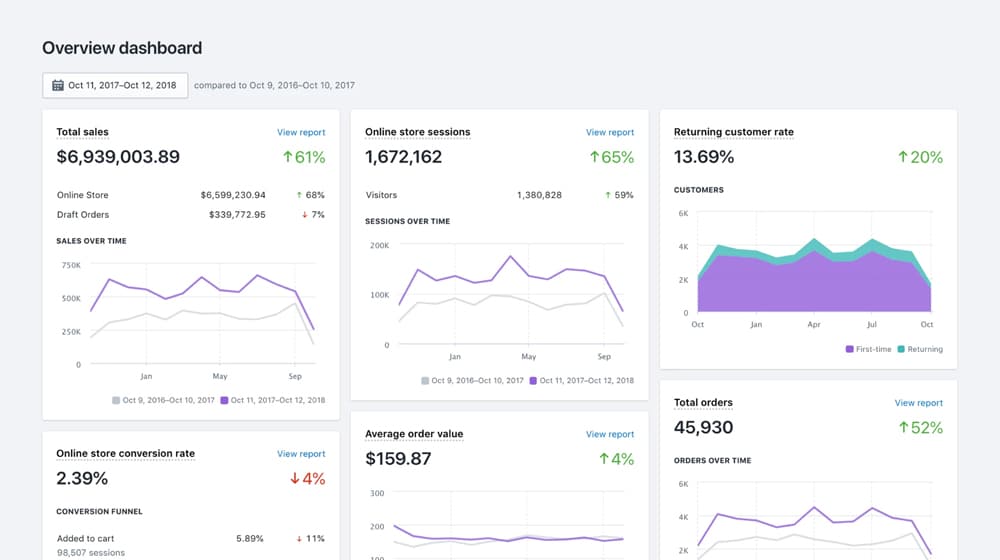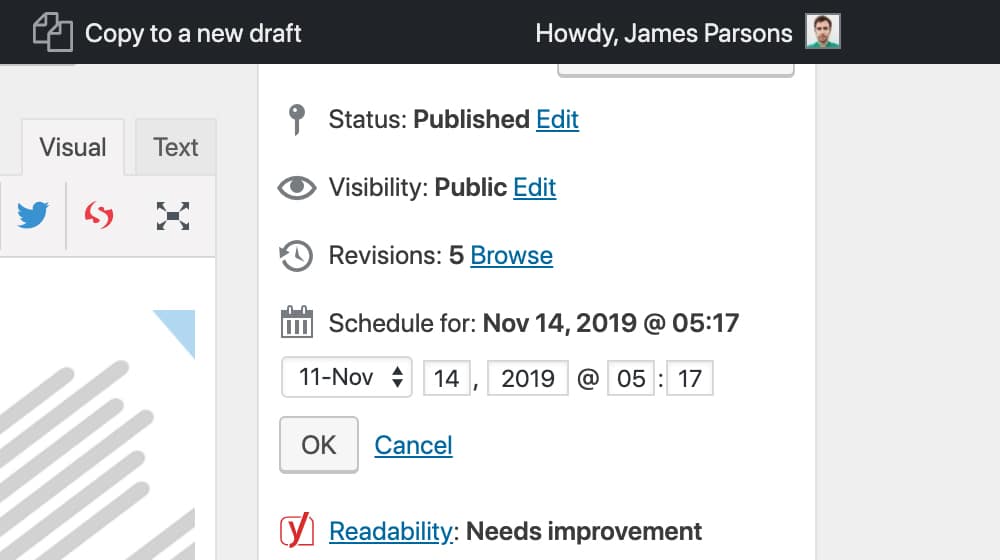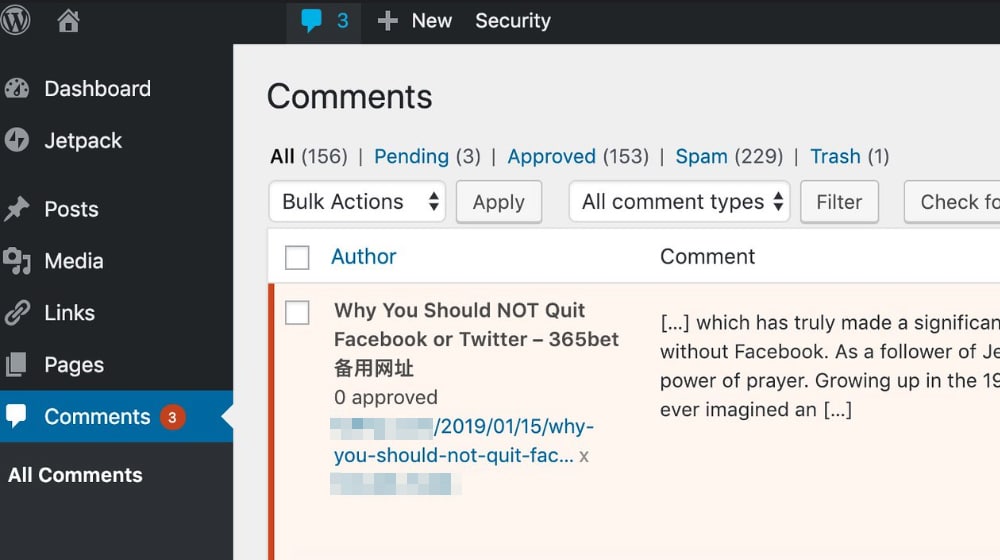How Long Does It Take for a Blog to Start Getting Traffic?

Whether you're a newcomer to the world of blogging, or you're a business owner who has been hearing about the necessity of a blog for a decade now, you probably have one overriding question above all else.
How long before this thing starts working?
Of course, there's no real answer to this question. A business with an established clientele can launch a new blog and start getting new hits, new rankings, and new sales almost immediately. On the other hand, a new blogger doing everything right might spend months or even years before they make more any real money from their site.
In order to figure out how long it will take before your blog starts working, you need to consider a range of different factors. So, let's talk about those factors.
What is Your Goal with Your Blog?
Before you can set any sort of time frame for how long it takes for your blog to work, you have to define what it means to work. The way I see it, there are four possible definitions.
- Your blog gets its first hit from an organic Google search.
- Your blog gets its first sale, ad click, or other money-making conversion.
- Your blog reaches a certain minimum threshold for organic traffic.
- Your blog reaches a certain minimum threshold for earnings.
Basically, you have to define whether you care more about traffic or sales, and you have to define whether you care about any traffic or sales at all, or if you want to hit a certain level before you consider your blog to be "working"".

For the vast majority of you, the goal of a blog is to make sales. Maybe you're doing it because you want to monetize a blog and have a passive income, or maybe you're running a business blog and need to use it to boost sales, but either way, making money is the real goal.
I also believe that setting a minimum payout threshold is the real sign of success. Who cares if your AdSense-enabled blog made its first dollar? You can't even retrieve that dollar from Google until 99 more join it. Reaching your first payout is the minimum level I would consider, and more likely I would personally go for a minimum consistent per-month earnings level.
Of course, that's me; you can define whatever metric for success you want.
Be Aware of the Google Sandbox
The first thing you need to be aware of as a new site owner is something called the Google Sandbox.
The name Sandbox comes from the idea of sandboxing in computer security. A sandbox is basically a quarantine and testing ground. A modern phone, for example, keeps apps in their own individual sandboxes, with a limited amount of access to other data and features of the device. This helps prevent a malicious app from accessing sensitive data or taking control over the device.
Sandboxes are used for security and for app testing. They can also be used any time you need a proof of transparency or security.

The Google Sandbox is basically a new website quarantine. When you create a brand new website – even on a domain you've owned for a while or that has existed for a long time, and which you purchased from a parked domain seller or an expired domain marketplace – Google puts it in a sandbox.
Why? Google wants to make sure you aren't going to abuse that domain. A website that used to be popular but then expired probably has a lot of links and maybe some residual traffic pointing to it. If you buy that domain and throw up a malicious website full of stolen content, Google then ends up recommending stolen content or malicious code to users, and that hurts everyone involved.
The sandbox essentially exists to prevent malicious abuse, but it has another purpose as well. The sandbox allows Google to monitor and audit your marketing efforts. If they see something that indicates abusive SEO – like keyword spam, invisible text, or content theft – or some kind of unnatural link building scheme, they can preemptively penalize the site. This is one way they help prevent private blog networks from cropping up and being successful.
Google has never officially confirmed that the sandbox exists, but it's widely agreed by SEO professionals that it's a real quarantine. You're fairly likely to experience sandboxing when launching a new site, whether you bought an old domain or a brand new one. The only way to avoid the sandbox at all is to buy an existing site and avoid changing much of anything about it.
It's worth noting that the sandbox only affects organic traffic from Google. If you're posting on social media, Google doesn't prevent people from clicking through. If you're paying for advertising, Google won't prevent you from buying ads or tracking referral traffic. If you're building links from third party sites, Google won't prevent those links from referring traffic, they just won't give you much SEO benefit until your site is out of the sandbox.
How long does the sandbox last? Some people claim it only lasts a few weeks, and that you can rank and start bringing in organic traffic in as little as a month. Other people consider a site to be in sandbox mode for up to 12-13 months after its creation. It varies from SEO to SEO how long they think it is and why.
Now, this is not to say you have to wait a year before your blog will see returns. Depending on other factors, you may still be able to be successful despite the sandbox, or you may reduce the duration of the sandbox. There's a lot going on, this is just something that new bloggers with no existing resources have to contend with.
How Much Effort Are You Putting Into Content?
Ignoring all of the technical aspects of SEO, the number one most important factor in your blog's success is your content. You need two things with your content to be successful:
- A high level of quality in the published content.
- A high level of consistency in publishing content.
Consistency is both easy and hard. It's easy to define: just pick a schedule and stick to it. Whether you publish once a week or once a day, keep it up. You want to build an audience that expects new content and checks back for it, not an audience that remembers you once every six months and goes to read one or two of your posts.
Some websites run blogs that publish once a month or less, and are still successful. I don't recommend trying it. Why? Well, if you look at it, you'll find that all of these sites have one thing in common: a very famous person doing the writing. These people can afford to be inconsistent or infrequent, because they publish thought leadership and deep insights, and they're spending their time elsewhere in their industry making an impact.
Personally, I recommend publishing 1-3 times per week. Publishing more than 3 times per week can be very taxing on your writing ability, or on your budget if you're paying for content. It typically requires either a significant investment in content purchasing, or accumulating several writers to work for you. Conversely, publishing less than once a week doesn't build up a backlog of content fast enough to really take advantage of Google's search results.

Remember, SEO is a numbers game to a certain extent. Every piece of content is an opportunity to rank for a new selection of keywords and queries, and a chance to attract a new group of people to your site. The more content you have, the more chances you have to build and grow. Better yet, barring extremely time-sensitive content, your opportunities don't disappear as you publish new ones. Evergreen content keeps attracting new people for months or years after it's published.
As far as quality is concerned, you want to make sure your content is worth visiting and reading. If you're writing 400-word blog posts on very basic industry topics, you're never going to stand a chance. Longer, more in-depth content is the way to go.
I always shoot for around 2,000 words, though sometimes I go a bit shorter or a bit longer depending on the topic. Other bloggers go much longer – Neil Patel famously writes blog posts of 5,000+ words.
The way I see it, the longer the content is, the more likely it is to be evergreen. For a news article, you can only write so much. News agencies and reporting blogs end up writing 500-1,000-word blog posts, but they do it every day or multiple times per day. Their content is also largely not relevant a week, a month, or a year later.
When you're starting a new blog, you definitely want to go with longer, more evergreen content. Short content simply doesn't attract long-lasting readers, and it's harder to get that content to rank when longer, more detailed content is your competition.
How Much Existing Audience Do You Have?
One of the biggest factors influencing how quickly you can get your blog off the ground is how much existing influence you already have and can leverage to get it running.
At the lowest level, you have a newcomer to the blogging world. Someone who has never run a website or owned a business before. These people typically only have a few friends and family members who might visit their blog, share a few links, and follow a few social media profiles. That's not much, and it's not going to get you organic hits, since they're all hits you're explicitly going out and getting.
One of the biggest problems with starting a blog at this level is actually just that your friends and family are probably not your target audience. Unless you're just running a blog to follow your life so your family can follow, anyways. Your friends and family can help "signal boost" your content, but they aren't engaged and they aren't much of a real seed for growth.

A higher step up the totem pole are the people who have made a name for themselves before. People who are famous for another reason – like being an outspoken political activist, the owner of a popular Facebook meme page, or the owner of a different small-time successful blog – are able to leverage that audience to follow their new efforts.
This is why one common tip for blogging is to make sure you have author bios on your posts, by the way. If you've done anything in the past, people who recognize you can follow your new content with more confidence. If you choose to do anything new in the future, having credits in your past makes it more effective. This is extra important after 2019 and the Google E-A-T update; Google wants to know who wrote the article and their credentials, and that can impact your rankings.
At the high end, of course, you have the wildly successful people starting new sites. Any new site Bill Gates, Elon Musk, or Neil Patel decides to create is going to get a great start day one. The fame, the name recognition, the money to throw around, it's all hugely beneficial to a new site.
Now, whether or not those efforts convert into continued success is another story. It wouldn't be the first time someone famous launched a new effort only for it to flop, and it won't be the last.
How Much Effort Will You Put Into Marketing?
This factor is pretty simple. The more effort you put into promoting your new blog, the better your results will be. If you think of it as nothing more than a place to publish some writing and let it sit, you're going to be struggling to get hits in a few years.
So what can you do to promote your blog?
- Create social media pages for your new blog/business.
- Share your posts on social media.
- Encourage your users to share content on social media.
- Embark on a campaign of influencer marketing to get powerful mentions.
- Publish an RSS or Atom feed to make it easier to follow your content.
- Contribute to other sites in your niche with links back to your content.
- Participate in Facebook groups, tribes, Twitter chats, and other social gatherings.
- Put effort into optimizing the meta data for your content for maximum Google appeal.
- Build a mailing list through an on-page call to action and leverage that list to notify readers when new content is posted.
- Participate in mutual sharing plans like Instagram Pods.
- Post your content on content aggregation services.
- Reach out to other industry sites and try to guest post.
- Comment on other industry blogs to showcase your expertise (but don't just blindly publish links or you'll be labeled a spammer).
There's a lot more you can do, of course, but you want to ramp up into it. If you try to take everything on at once, you're going to burn yourself out when you see it's still a long, slow process. Remember that even the best SEO takes time, so don't feel too bad when your shares don't skyrocket.
How Much Money Will You Invest in Promotion?
The other side of the promotional coin is, well, coin. You can kickstart any marketing effort and get more traffic and more conversions faster by investing money into it.
Money can be invested into your blog in a number of different ways. On the one hand, you can invest into the site itself. Pay money to produce better content, license better images, produce better graphic design, and optimize with better tools.

On the other hand, money drives traffic and conversions through paid ads. You can pay for social media shout-outs, you can pay for influencer mentions, and you can pay for guest post links. You can also just pay for ads directly, with promoted posts on social media or promoted links on Google search and in the Google display network. The more money you have to invest, the faster you can grow.
Do You Have Any Connections You Can Utilize?
Money is good, but it can only get you so far. The fact is, a lot of the people who click through and even who buy because of your ads aren't going to stick around. When you stop paying money, you stop getting those conversions. Ideally, your baseline will have risen, but that's not always going to happen.
One of the best things you can do to promote a new blog is leverage your existing connections. LinkedIn is a great network for this, assuming you've been using it long enough to build up a network. Otherwise, you have to go about it the old-fashioned way.

Think about your friends and family. Do any of them have positions of importance or exposure that they can use to promote your efforts? Athletes have fans they can shill to. Bloggers can mention their friends to their audiences. Business owners might be able to form some kind of mutually beneficial partnership.
Remember that the more you use your connections, the less they'll be willing to help you out again in the future if you burn them. This is common if you're starting a blog to promote, say, a MLM scheme. Your friends shill for this MLM friend of theirs, you rope people into it who lose money, the backlash hurts your friend, and it all spirals. Don't, uh, fall into MLMs, I guess.
If you don't have friends and family who can help, look to further connections. If you've heard of "six degrees of separation", think about it like that. Consider your second and third-degree associations. People your friends can introduce you to, or friends of friends of friends who might be willing to help. If your friends can get you an introduction, you can leverage your own natural social skills to get your shout-out.
How Long Does It Take?
So, as you can see, there's no simple answer to the question of how long it takes for a blog to start working. I've seen blogs that get an audience the day after they're launched, and I've seen blogs struggling two years after their first published post. It all depends on the above factors. Better get started!










November 22, 2019
Hi James, thank you for putting together this article. I've been blogging on and off for my acupuncture and chinese medicine blog but havent gotten much results out of it. I have 83 articles to date, some written by me and some were outsourced... I only publish maybe 1 article every week or two. I know you say 1-3 times per week is recommended but do you think a few articles per month is enough? Thanks
November 22, 2019
Hey Mary! Honestly I wouldn't worry about frequency as much as content quality.
How much effort was put into that content? The articles you had outsourced, did you read every single one? Did they cover the topic adequately and teach them everything they ever wanted to know about the subject?
If the answer is no, I'd delete those old articles. The problem with outsourced articles or ones written by content mills is they are generally low value or don't cover the topic as well as you could. It sounds like you need to review your current content and make weed out any article that isn't long-form quality content. If they're not getting visitors and are low quality, you may be better off deleting those, as they may be doing more harm than good. That way, you can start fresh with a new content strategy with quality in mind.
I hope this helps! Drop me an email if you need any assistance with this 🙂
December 03, 2019
Hey, James happy to find a good source to read, you are doing a great job. It is really helpful.
Can you please answer this question of how many backlinks we can make from a particular domain.
December 03, 2019
Thanks for your comment! Sitewide backlinks, or receiving thousands or even hundreds of thousands of links from a single domain, are heavily discounted. Footer links are also heavily discounted since they are at the bottom of the site and of lower importance. Relevanace is important and it's hard to make a site-wide link (or links from thousands of pages on a single domain) relevant. Quality is always better than quantity with SEO and blogging. I usually remove or disavow links from sites that are linking hundreds or thousands of times, they are almost always spam and it's a potential spam indicator to Google. I hope this helps!
June 15, 2021
Awesome article. All of your blog posts have been super helpful.
June 17, 2021
Thanks Awais!